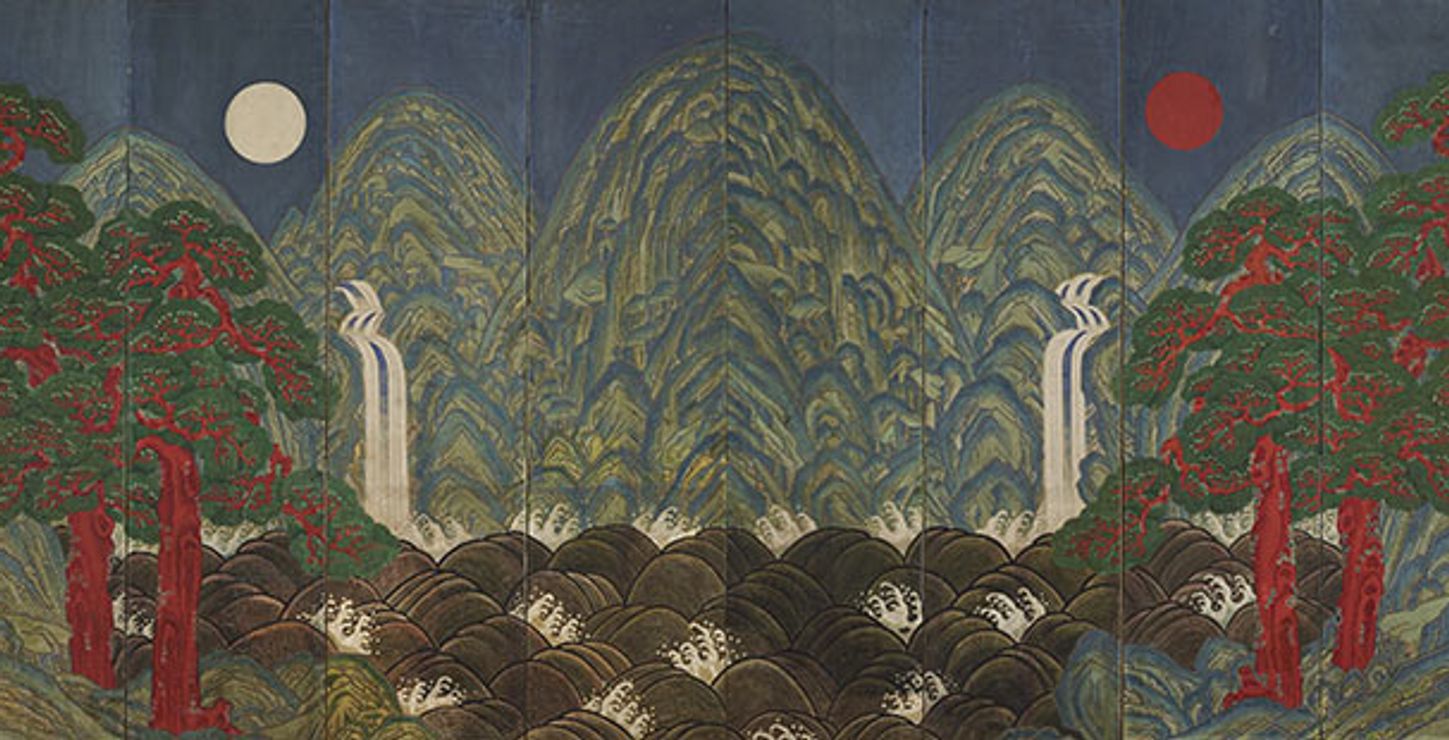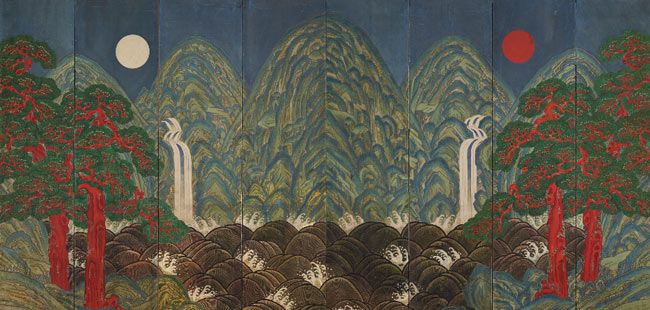Main Building
A sweeping panorama, Treasures from Korea celebrates the artistic achievements of the Joseon dynasty, a line of twenty-seven monarchs that ruled the Korean peninsula for more than five hundred years and left a substantial legacy for modern Korea. A variety of objects—including painted screens, scrolls, calligraphy, furnishings, costumes, accessories, and ritual wares used in ancestral rites and Buddhist worship—explore the roles of king and court, the distinct spheres of men and women in society, and religious beliefs, all underpinned by the ideals of Confucianism. This is the first full-scale American exhibition to be devoted to art of the Joseon dynasty.
Exhibition Trailer
Comprised of more than 150 works drawn primarily from the National Museum of Korea's collection and supplemented by objects from public and private collections, Treasures from Korea presents American audiences with a rare opportunity to see some of Korea's artistic masterpieces, including a number designated as national treasures. The exhibition includes interactive displays of select objects, a free audio tour, and a family guide. In addition, a broad range of programs such as film screenings, family celebrations, performances, lectures, and dining events are offered throughout the run of the exhibition.
Themes
Symbols
Featured in the screen below are ten longevity symbols that express the universal wish for a long, healthy life. These symbols appear in many kinds of Korean art, including ceramics, furniture, embroidery, and metalworks. According to historical documents, Korean kings and their courtiers exchanged pictures of these auspicious symbols at the beginning of each new year. Such folding screens were placed behind the seat of the royal family during important ceremonies and banquets, serving as both an auspicious emblem and a lavish decoration. This particular screen was most likely produced for ceremonial use in the court.
Pine Tree
The pine tree is one of the most common symbols of longevity in East Asia. Because it remains green even in the harshest winters, it stands for resilience, endurance, and strength against adversity. Its gnarled bark was thought to resemble an old man's skin. A fourth-century Daoist text suggests that drinking the resin of a thousand-year-old pine will enable one to "live as long as the sun and the moon." The pine tree, bamboo, and plum tree are known as the Three Friends of Winter because they are evergreens.
Sun
The sun is identified with longevity because it rises in the sky each day, without fail. The sun and moon represent the complementary yet opposing forces of yang and yin, which animate the cosmos in East Asian philosophy. The sun is pure yang, the male principle of the universe that is light and active and generates life.
Crane
Cranes live a long time, some species as long as eighty years. In some Asian folktales they are said to live as long as five hundred years. Cranes mate for life, and therefore symbolize harmony, a wish for a long marriage, and respect for one's parents and ancestors. Cranes also signify promotion at court, as they appear in the rank badge of Joseon civil officials. In Daoism the crane symbolizes transcendence and serves as a means of transport to heaven.
Water
An almost universal symbol of life, fruitfulness, and abundance, water is linked to longevity across time. In Daoist philosophy, water is one of the five eternal elements—together with earth, fire, metal, and wood—that make up the cosmos. A section of the important Daoist text Dao De Jing reads, "Nothing under heaven is softer or more yielding than water; but when it attacks things hard and resistant there is not one of them that can prevail."
Cloud
As producers of rain, clouds sustain long life. In their swirling forms they contain the Daoist qi (chee), or breath of life. When their vapors gather around the mountaintops, they represent the uniting of yin and yang, soft and hard, changeability and permanence. The shape of clouds in some Joseon dynasty paintings, like this screen, resembles the form of the mushroom of immortality, reinforcing their connection to longevity.
Mountain
Mountains and rocks keep their shape forever. The breathing of mountains is believed to activate the universe. They are the abode of Eight Daoist Immortals and on them are said to grow the mushrooms of immortality. In Korea and China, important state rituals were conducted in the mountains, and the dominant mountain peak became the emblem of the emperor.
Deer
Nibbling as they do on forest vegetation, deer are believed to have a special talent for sniffing out the elusive mushroom of immortality that grows high in the mountains. They are frequently shown as the companion of Shou Lao, the Daoist god of longevity. Ground horn of deer has long been used for medicinal purposes in East Asia and is believed to promote health and long life. White Deer Lake on JeJu Island in Korea was said to be the place where immortals came "to bathe and drink in the milk of the white deer."
Mushroom
The sacred, cloud-shaped lingzhi mushroom grants immortality to those who eat it. This mushroom springs from the roots of trees that grow high in the mountains where the Daoist immortals live. According to legend, it can be found only by a deer, crane, or phoenix.
Turtle
Turtles are noted for their long life span. In addition, with their dome-shaped upper shell, flat lower shell, and legs in the four corners of their bodies, they were early emblems of the universe and the cardinal directions. In Korean mythology, the turtle is a messenger of good news in water, its counterpart being the tiger, the messenger in the mountains. In this screen, streams of breath emanate from the turtles' mouths, perhaps delivering their sacred messages.
Bamboo
Bamboo is one of the most versatile and abundant materials in East Asia, eaten by both humans and animals and used to make everything from houses to paper. It remains green throughout the four seasons and therefore symbolizes long life. Because it bends rather than breaks, bamboo also represents resilience, and its simple shape, humility. According to Confucian ideology, bamboo possesses the qualities of a great scholar: humility, uprightness, flexibility of mind, and grace.







